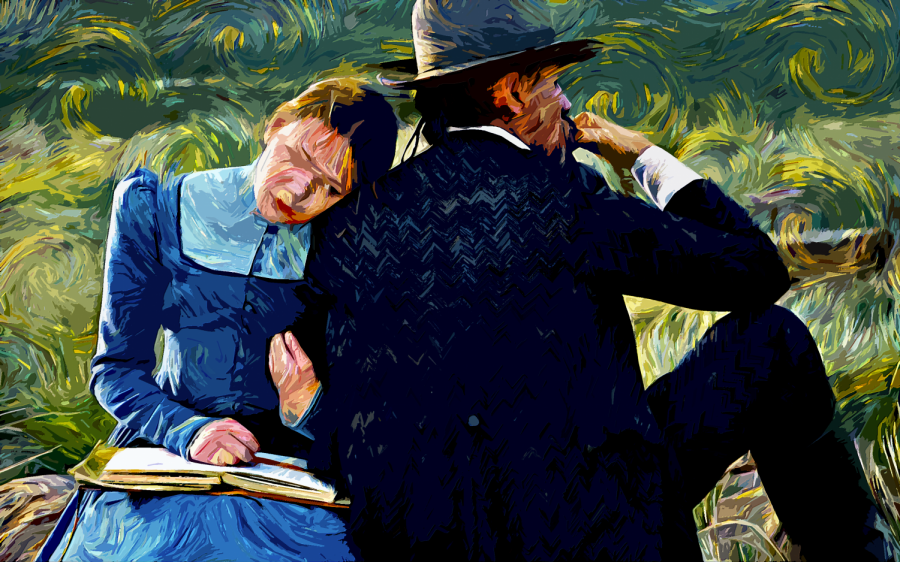On Kanopy: ‘Jauja,’ a journey towards curiosity
Lisandro Alonso’s film is an exciting odyssey across the Argentine Patagonia
September 21, 2021
Lisandro Alonso’s 2014 feature, “Jauja” (pronounced how-ha), is the literal embodiment of the term “slow cinema.” The movement is known for its use of long takes, minimalism, sparse dialogue and a keen sense towards observation and curiosity. The film’s visual aesthetic also may pique a viewer’s curiosity. The aspect ratio is the boxy 1.33:1, which harkens back to the works of old Hollywood. More recently, David Lowery’s “A Ghost Story” and Robert Eggers’s “The Lighthouse” have used this style. This stylized choice presents “Jauja” as a sort of collage-like series of vignettes that frame characters in frequent wide shots, or close-ups, capturing the intimate details of a conversation between two lovers. Dialogue is of utmost importance in “Jauja.” Early on, Ingeborg speaks of wanting a dog, “one that will follow [him] everywhere.” This thematic tool, the dog, is used frequently by Alonso throughout the film.
The film is primarily set in the Argentine Patagonia during the Conquest of the Desert, an expansion that led to the displacement and killing of Patagonia’s native population. Dinesen and his daughter, Ingeborg (Viilbøjrk Malling Agger) travel from Denmark to Argentina in search of the mystical land, which takes its name from the film’s title. Upon their arrival, Ingeborg inevitably falls for one of the soldiers and runs away. This really is where the film begins to take shape — or begins to morph perspective. As Dinesen traverses further and further into the desert, time begins to loosen and weave. A pervading sense of confusion comes when the now scruffy Dinesen finds a disheveled, old woman in a cave. Her only companion, an equally unkempt dog.
“The desert swallows them up,” says the decrepit woman whom Dinesen briefly meets. Their brief encounter emits the energy of a cordial, albeit bizarre conversation; we’re left to wonder about the cosmic connection that potentially links the two together.
Time and again the film asks the viewer to not focus so much on what drives the characters — although some show quite extremist tendencies — but rather to examine their existence in the context of the inescapable void that is the desert around them. A place that is both beautiful, unexplored and yet, suspended in time. The film’s pacing allows for the viewer to examine the details, to — like Dinesen — get lost along the way. It would seem that this is part of the process. To meet a wistful gaze or witness a final farewell. And with a finale that is sure to surprise, “Jauja” concludes its odyssey of the desert.
This film can be found on Kanopy, which all UTSA students can access through the library’s database page.







